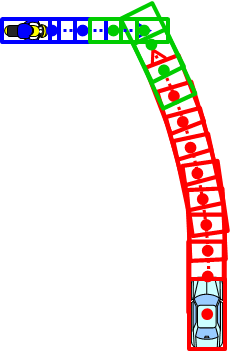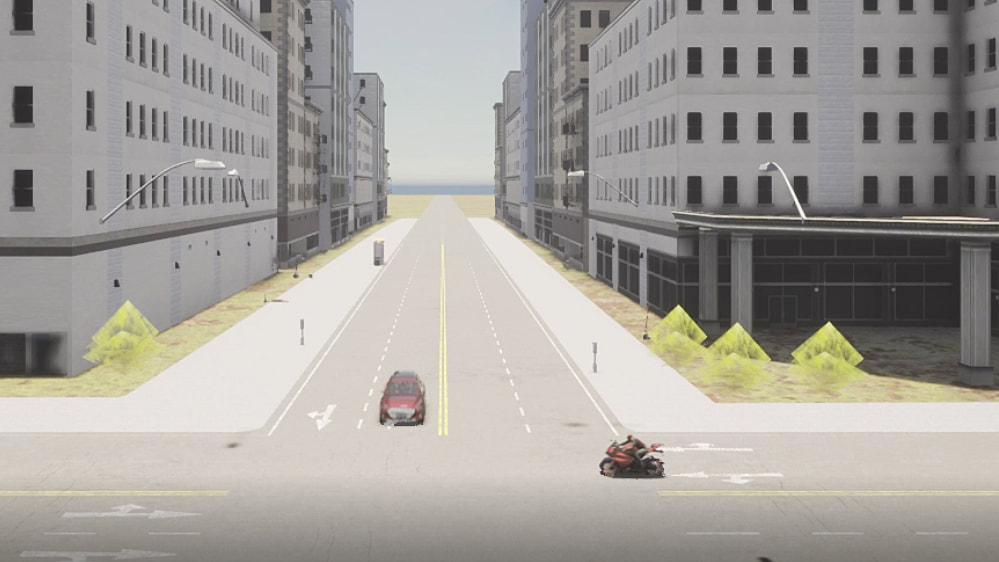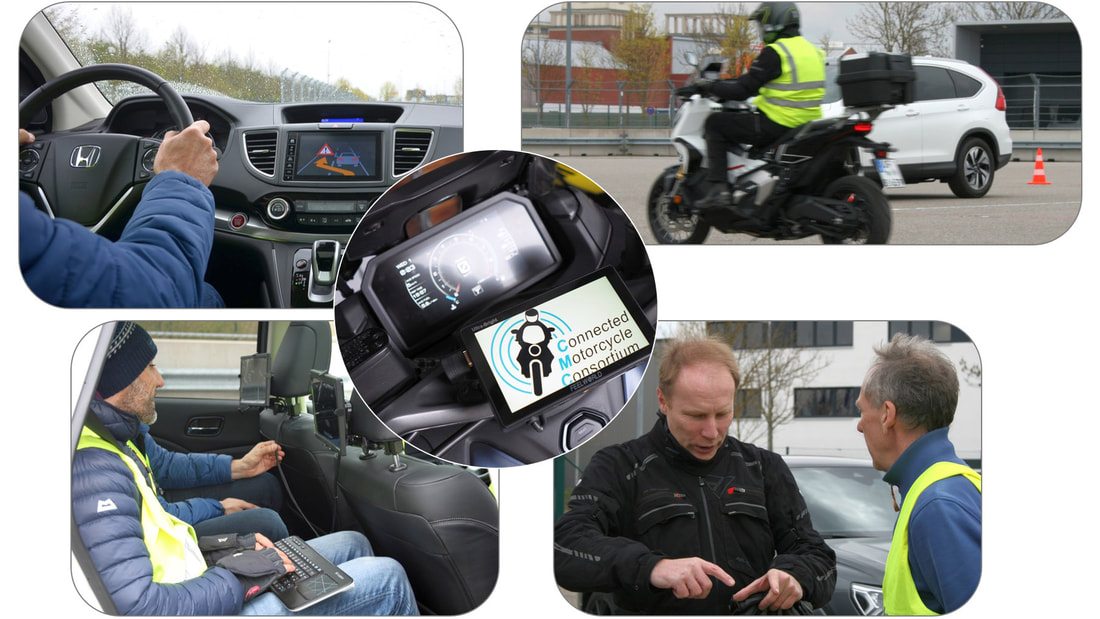|
In this post we will explore how the second generation of motorcycle applications are ready and meet real world testing after a period of simulation studies. We will explain about those studies and see how Japanese and European engineers of several key motorcycle manufacturers gathered at the Carissma test track in Germany to scrutinise the current technical level of the applications, which are supposed to improve motorcycle safety, in real life. Finally, we will also dwell upon the handover of the CMC presidency from Mr. Nomura of Honda to Mr. Lischka of BMW Motorrad. Application development It has been a while since the prototypical development of several C-ITS applications in the first CMC generation between 2016 and 2020. The current team, consisting of representatives of all participating motorcycle OEMs, concentrated on the further development of the second generation Intersection Movement Assist (IMA) and Left Turn Assist (LTA). Both applications are now higher developed and more sophisticated and based on the latest ETSI standards. In addition, they can now cover a wide range of different scenarios.
Simulation The CMC experts first tested and validated the two further developed functions IMA and LTA virtually in a simulation environment and further improved the application with the knowledge gained. The open-source simulation software Car Learning to Act (Carla) is used for this purpose (see picture). “First, we developed suitable maps as part of the simulation environment for our motorcycle-specific use cases developed in CMC, which depict the respective scenarios”, says Mrs. Chouta, research assistant at CARISSMA, Technische Hochschule Ingolstadt, Germany. Large number of simulation scenarios In addition, the two applications were tested in the simulation environment and played out in large number of different scenarios. Mrs. Li, Bertrandt Group, responsible for the implementation of the simulations, says: “Thanks to the virtual simulation, we were able to test the further developed applications perfectly and, as soon as we identified a need for improvement, we were able to work on this and to test them again in the next development loop. This has helped us to cover many different scenarios. The use of virtual and digital methods paired with an agile way of working in an international team of experts enables us to be optimally prepared for the first hardware testing." First testing in real-life scenarios In April 2023, the test engineers from all OEMs involved in CMC met at the Carissma test site at Ingolstadt University of Technology. Here, for the first time, the further developed and virtually tested applications were added to the revised and updated vehicle prototypes. After completing the communication test and successful commissioning, the Crossing and Left Turn use cases were tested in a real scenario. Firstly, the findings from the simulation could be confirmed. The applications were working as expected and as simulated. e.g. the notifications were operating/non-operating as they were intended to be. Secondly, individual parameters were further optimized, such as the timing of notifications.To optimize the timing of notifications, it is necessary to test with real humans and consider their perception, acceptance, and behavior, which cannot be replicated in simulation. Last but not least, an important observation is that the newly developed applications were all functioning correctly in real-life scenarios when implemented in vehicles. Next level testing with car manufacturers So now, CMC is ready for a next level of testing. The entire testing team of CMC is already looking forward to the upcoming test event in June 2023 at the Dekra Technologies Center Lausitzring, where testing will be continued and expanded with advanced driving assistant systems together with car manufacturers. CMC Next Presidency
Mr. Nomura, former Managing Officer, Chief Officer, Motorcycle & Power Products Operations, Honda, represented CMC as president until the end of 2022. In 2023, Mr. Lischka, Head of Development BMW Motorrad, took over the CMC presidency. Mr. Nomura and Mr. Lischka together underline the importance of the CMC test events in 2023 together with car manufacturers and other partners in the vehicle safety community. Mr. Lischka was already able to get an idea of the developed C-ITS applications in motorcycle-relevant use cases on the test site at the Ingolstadt University of Technology. “I am pleased with the progress that the CMC OEM team has made across the board. In particular, all topics relating to the information and warning concept were very easy to experience and have proven to be a good basis for further development. As CMC, we will define the next steps together with car manufacturers in the upcoming test events and also explore the potential contribution of driver assistance systems in cars to enhance motorcycle safety. The tests will allow us to experience this actively firsthand. I would like to thank everyone involved for their collective efforts to improve motorcycle safety!” |
Archives
May 2024
|
COPYRIGHT 2024 Connected Motorcycle ConsortiumContact Us |
|





 RSS Feed
RSS Feed